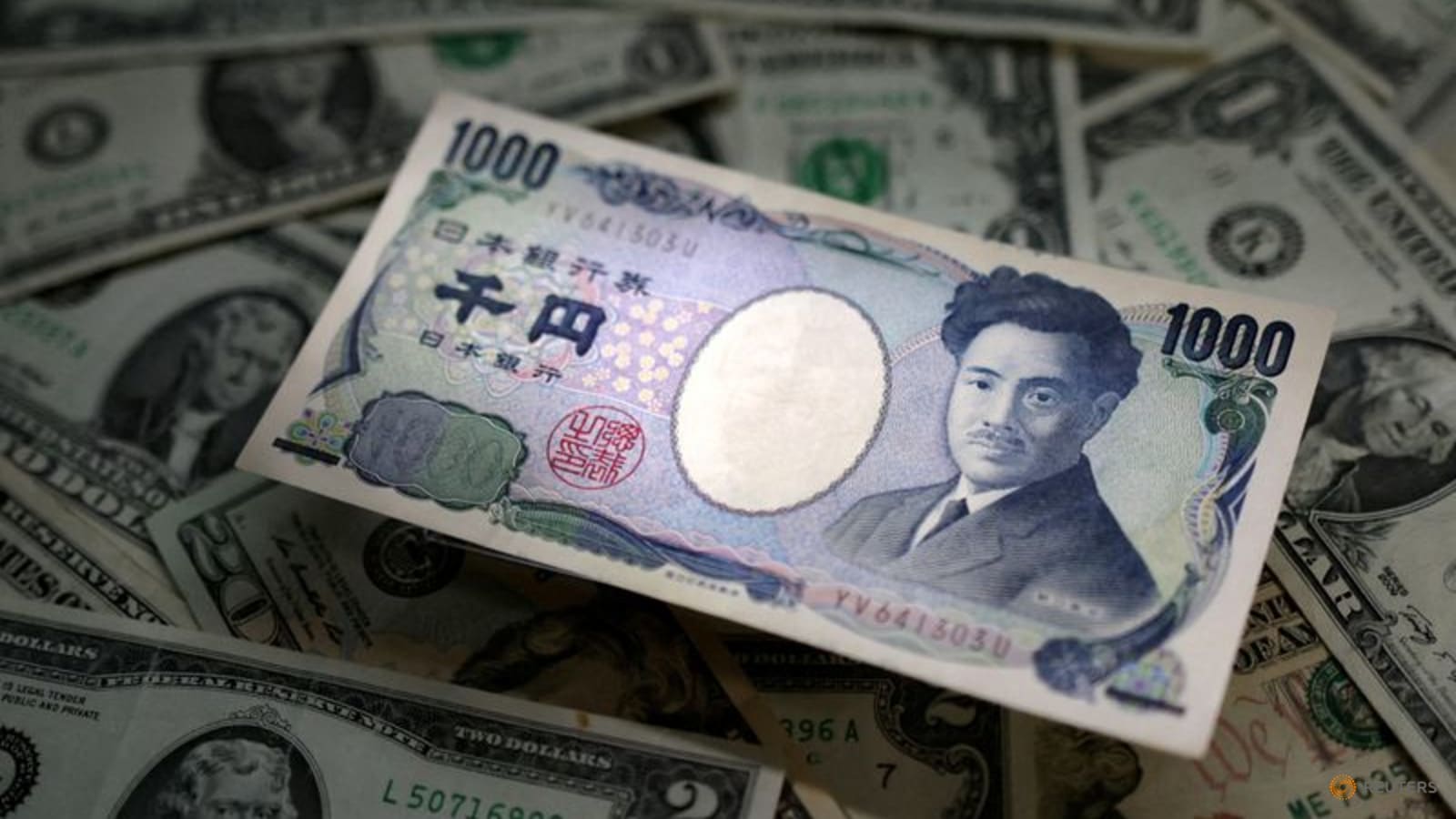SINGAPORE : The yen slipped on Monday to its lowest in the year against the dollar, breaching the key 145 level before regaining some ground as traders warily looked for clues on possible intervention, while the dollar rose to a more than one-month peak.
The Japanese yen weakened to as low as 145.22 per dollar in early Asian hours, its lowest since Nov. 10 before quickly reversing course in a volatile start to the week. It last fetched 144.92, up 0.03 per cent.
Japan’s low yields have made the currency an easy target for short-sellers and funding trades, with the widening gap in the interest rates between Japan and the United States leading to persistent weakness in the yen.
Japan intervened in currency markets last September when the dollar rose past 145 yen, prompting the Ministry of Finance (MOF) to buy the yen and push the pair back to around 140 yen. The yen is down nearly 10 per cent against the dollar for the year.
“Lack of verbal intervention so far suggests that the patience level of Japanese authorities may have gone up after the latest tweak to monetary policy and the disinflation trends in the United States,” said Charu Chanana, a market strategist at Saxo Markets.
“Still, traders are potentially cautious of that 145 handle and some profit taking is possible, suggesting the move above 145 will likely remain a slower crawl.”
With the yen loitering around the level again, traders expect Japanese officials to start warning of intervention soon as they did in June.
“We believe the MOF will start pushing back in the 145-148 range,” said Joey Chew, head of Asia FX research at HSBC. “But if it does not, short positions on the yen will likely be rebuilt further.”
Investors currently hold a short position in the yen worth $7.25 billion, down 30 per cent from a 14-month high last month.
Analysts said GDP and CPI data in Japan due this week are likely to be key along with U.S. retail sales data which could continue to push Treasury yields higher.
Treasury yields have been elevated and got another boost on Friday after data showed U.S. producer prices increased slightly in July, more than expected, as the cost of services rebounded at the fastest pace in nearly a year.
That comes after news on Thursday that consumer prices rose moderately in July. The PPI data cast some doubt on whether the Federal Reserve is done with its rate hike cycle.
Markets anticipate nearly 89 per cent chance of the Federal Reserve standing pat on interest rates at its meeting next month, the CME FedWatch tool showed, with traders anticipating no more hikes for the rest of the year.
Central bank officials, though, have maintained that it is too soon to make that call.
ANZ analysts said the resilience of the U.S. consumer will be in the spotlight with the release of July retail sales data, with rising fuel prices and tighter credit conditions expected to bite.
The dollar index, which measures the U.S. currency against six peers, rose 0.097 per cent to 102.95, having touched a more than one month high of 103.02
The euro was down 0.12 per cent to $1.0931, while sterling eased 0.15 per cent to $1.2675.
The Australian dollar fell 0.42 per cent to $0.6470, while the kiwi slipped 0.36 per cent to $0.5963. Both Antipodean currencies slid to their lowest since November earlier in the session. The currencies have been undermined by disappointing trade and inflation data from China, the biggest buyer of their resource exports.
While sentiment towards China is down, this week’s high-frequency China data may only need a small beat to cause a strong upside reaction in China proxies, said Pepperstone’s Head of Research Chris Weston.


